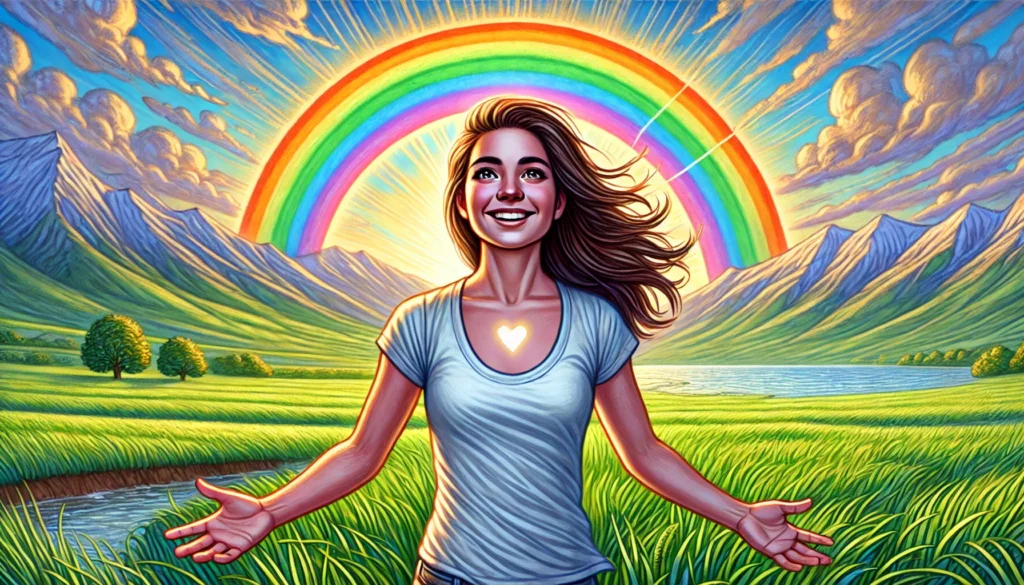In a serene field surrounded by majestic mountains, a young woman stood with her arms raised, embracing the beauty of the world around her. The sky above was a tapestry of colors—blue blending with the soft hues of the setting sun, a gentle rain kissing the earth, and a radiant rainbow stretching across the horizon. From this rainbow, an arrow descended, not to harm, but to remind her of a deeper truth.
As the arrow drew closer, she felt its presence near her heart, not piercing it, but filling it with a warmth that spread throughout her being. She remembered a teaching from the Buddha: in life, we are struck by two arrows. The first arrow is the event itself—something that happens beyond our control. It could be a sudden change, a loss, or an unexpected challenge. This arrow is inevitable; it is simply life unfolding.
But the second arrow is different. It is our response to the first. This arrow is shaped by our thoughts, emotions, and reactions. It is where suffering begins, for it is not the event itself that causes our pain, but our attachment to it, our fear, our anger, our sorrow. This second arrow is optional; it is within our power to choose how deeply it strikes.
As she stood in the field, the young woman realized she had no control over the first arrow—the event—but she held the power to decide how the second arrow would land. Would she let it wound her, or would she allow it to pass through, transforming the potential for suffering into an opportunity for growth?
She chose the latter. With each breath, she released the tension, the fear, the need to control. She let the arrow of emotion pass through her heart, and as it did, she felt a sense of peace and clarity. The pain of the event was real, but the suffering was not. She could embrace the experience, learn from it, and move forward with grace.
The sun dipped lower in the sky, casting a golden light over the field. The arrow dissolved into the air, leaving behind only the warmth in her heart and the knowledge that she could face whatever life brought her way. Pain was inevitable, but suffering was optional. She had chosen her response, and in doing so, she had chosen her freedom.
Coaching Questions for Reflection
1. What current situation in your life feels like the first arrow, something you cannot control? How are you responding to it emotionally?
2. Reflect on a past event where you allowed the second arrow to strike deeply. How could you approach a similar situation differently now, with the understanding that suffering is optional?
3. What practices or habits can you develop to help you manage your emotional responses to challenging events, allowing the second arrow to pass without causing suffering?
In Summary
The story, “The Two Arrows: A Story of Resilience,” follows a young woman in a serene field, reflecting on the Buddhist teaching about the two arrows: the first arrow represents unavoidable events, while the second symbolizes our emotional response. The narrative emphasizes that while we cannot control the first arrow, we have the power to choose how we respond, thus determining whether we suffer or grow. The story concludes with Lao Tzu’s wisdom, “To end all suffering, stop thinking,” reinforcing the idea that our thought processes often fuel suffering. A future blog will explore the distinction between thoughts and thinking, deepening the understanding of how to manage our responses.


